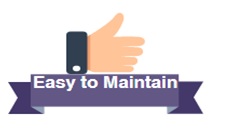Once you are done with your tax and investment part, be ready to shell out more money on your two-wheeler insurance as, IRDAI has increased premium rates from 1st April. The sad part is that the insurance watchdog revises premium rates every year!
So, what is the solution? Avoiding insurance at all? I would never acknowledge the idea of shunning the two-wheeler insurance, which according to me, can prove dangerous if you are riding your scooter or bike on Indian roads, which reported more bike accidents than car accidents in 2015, as per the report of the National Crime Record Bureau.
Instead of dropping a two-wheeler insurance cover, go for a long-term insurance policy which can shield you from annual premium hikes. This policy protects your vehicle for a tenure of up to three years in one go. In addition to this, you can enjoy the following benefits:
- No Tension: Insuring a bike for two or three years in one shot will make you worry-free.
 With a long-term policy, you don’t need to keep a track of your policy renewal date and you can focus on other more important events and dates, like your child’s birthday, your marriage anniversary, bike servicing date, etc. If you have a long-term policy, you just have one thing less to remember.
With a long-term policy, you don’t need to keep a track of your policy renewal date and you can focus on other more important events and dates, like your child’s birthday, your marriage anniversary, bike servicing date, etc. If you have a long-term policy, you just have one thing less to remember. - Save Money: This point takes us to the above where we talked about a hike in insurance
 premiums. As the apex insurance regulatory body, IRDAI revises premium rates every year, you may end up paying a slightly higher premium without even realising it. And this holds true in case of both third-party policy and comprehensive insurance. However, if you have a long-term policy, you can insulate yourself from the annual hike.
premiums. As the apex insurance regulatory body, IRDAI revises premium rates every year, you may end up paying a slightly higher premium without even realising it. And this holds true in case of both third-party policy and comprehensive insurance. However, if you have a long-term policy, you can insulate yourself from the annual hike.
In a long-term insurance policy, the premium is fixed for the entire policy tenure while there is an incremental rise of 15%-20% in the renewal premium in case of single-year policy. As, in case of long-term policies, insurance companies make a saving on the administrative and policy-issuance costs, the same benefit is passed on to policyholders in the form of lower premium rates.
- Higher No Claim Bonus (NCB): Every motor insurance company rewards its
 policyholders with a higher NCB for not making a claim in the previous policy year. This NCB is translated into lower premium rates. Under a single-year policy, a single claim can make your NCB zero. However, in a long-term policy, the insurer gives the benefit of NCB even if a claim is made, subject to the number of claims made during a policy tenure.
policyholders with a higher NCB for not making a claim in the previous policy year. This NCB is translated into lower premium rates. Under a single-year policy, a single claim can make your NCB zero. However, in a long-term policy, the insurer gives the benefit of NCB even if a claim is made, subject to the number of claims made during a policy tenure.
| NCB Structure for 1-Year Policies | |
| Clause | NCB Earned |
| At the end of first claim free year | 20% |
| At the end of two consecutive claim-free years | 25% |
| At the end of three consecutive claim-free years | 35% |
| At the end of four consecutive claim-free years | 45% |
| At the end of five consecutive claim-free years | 50% |
| NCB Structure for 2-Year Policies | |
| Clause | NCB Earned |
| At the end of two claim-free years | 30% |
| In case of one claim during the two-year policy tenure | 20% |
| In case of more than one claim during the two-year policy tenure | Nil |
| NCB Structure for 3-Year Policies | |
| At the end of three claim-free years | 40% |
| In case of one claim during the three-year policy tenure | 30% |
| In case of two claims during the three-year policy tenure | 20% |
| In case of more than two claims during the three-year policy tenure | Nil |
- Protection against unnecessary risks and losses: Riding a two-wheeler with an expired insurance policy, even for a single day can prove costly to you. In case you meet with an accident, you can’t approach the insurer and say, “My policy is expired only by one
 day, so please settle the claim.” And God forbid, if you’re caught up by the traffic police, you will have to bear all the losses yourself. However, if you have a long-term two-wheeler insurance policy, you can save yourself from the troubles of renewing your policy annually. Also, there will be no need of getting your vehicle inspected every year. With a comprehensive cover, you are insured for an extended tenure and there is seldom any gap in the coverage.
day, so please settle the claim.” And God forbid, if you’re caught up by the traffic police, you will have to bear all the losses yourself. However, if you have a long-term two-wheeler insurance policy, you can save yourself from the troubles of renewing your policy annually. Also, there will be no need of getting your vehicle inspected every year. With a comprehensive cover, you are insured for an extended tenure and there is seldom any gap in the coverage. - Dodge the paperwork: If you go with a single year policy, you would have to undergo the same procedure again— comparing and choosing the right policy, filling the insurance
 paper, signing, and sending them back to the insurance company. Even though it is done once a year, this repetitious and boring work is annoying, isn’t it? A long-term insurance is the right solution. Just buy a policy for once and a single policy document will be valid for the next two or three years.
paper, signing, and sending them back to the insurance company. Even though it is done once a year, this repetitious and boring work is annoying, isn’t it? A long-term insurance is the right solution. Just buy a policy for once and a single policy document will be valid for the next two or three years. - Easy to cancel the policy: Though you are getting the coverage for two or three years in one go, it doesn’t mean you have to stick to it even if you don’t like it. Just like a
 normal annual policy contract, you can cancel the multi-year policy at any point of time. At the time of cancellation, the insurer will refund the premium of the unutilised tenure. However, just because you can cancel the policy at any time, avoid doing so unless you insure your vehicle with another insurance policy. Further, if you had NCB on the previous policy, obtain an NCB certification to get lower premium rates from the new insurer.
normal annual policy contract, you can cancel the multi-year policy at any point of time. At the time of cancellation, the insurer will refund the premium of the unutilised tenure. However, just because you can cancel the policy at any time, avoid doing so unless you insure your vehicle with another insurance policy. Further, if you had NCB on the previous policy, obtain an NCB certification to get lower premium rates from the new insurer.
The Final Verdict
Some things are certain and you can’t control them, so instead of worrying about IRDAI’s next move, go with a long-term two-wheeler or bike insurance, and protect yourself, (your vehicle too) both physically and financially.


